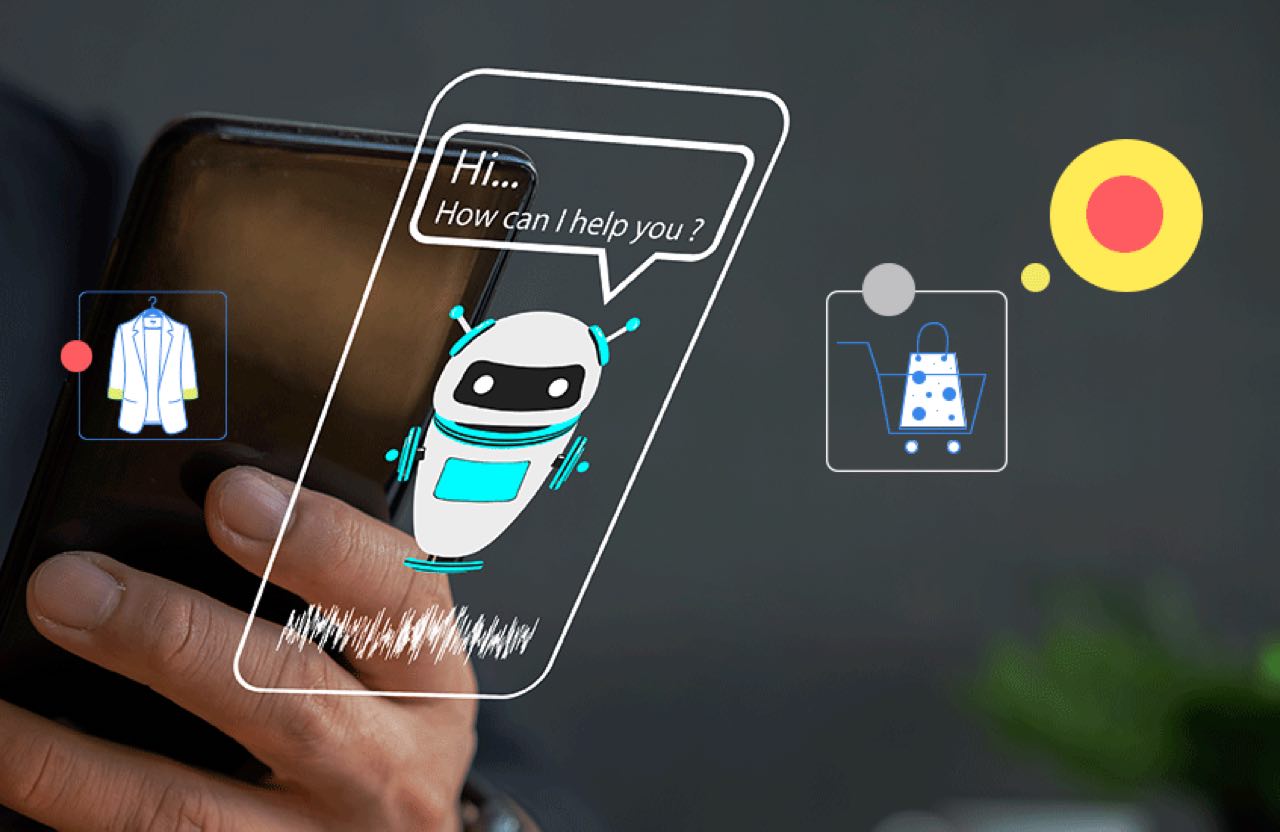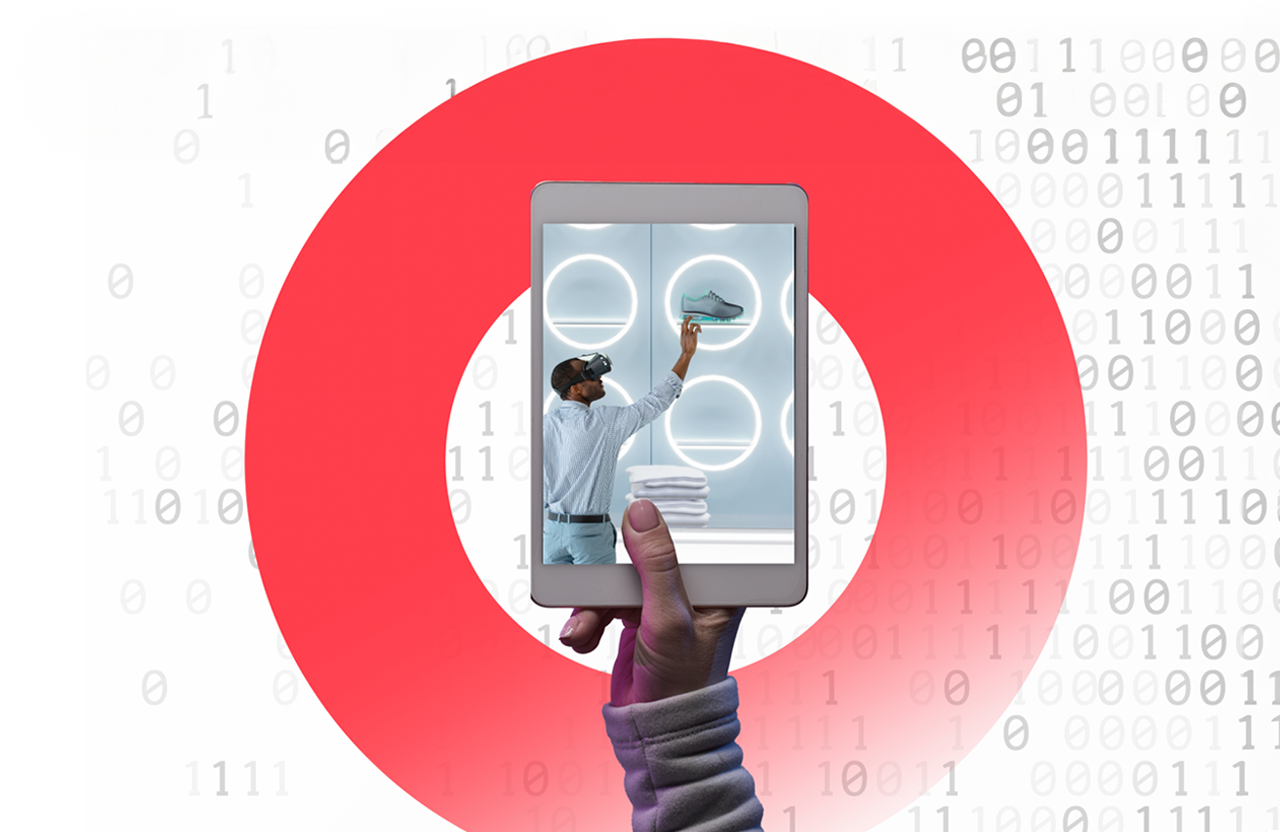What issue can we solve for you?
Type in your prompt above or try one of these suggestions
Suggested Prompt


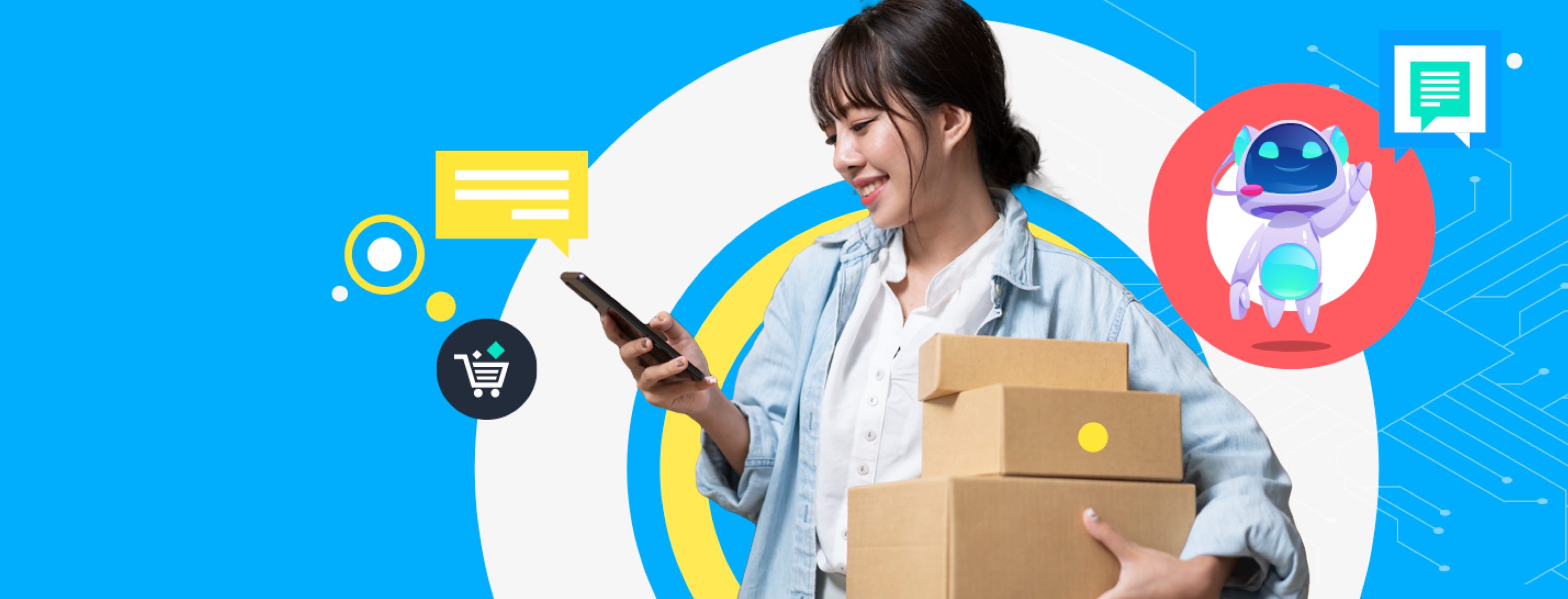
Insights
The Hitchhiker’s Guide To AI for Consumer Packaged Goods Firms (CPGs)
The Hitchhiker’s Guide To AI for Consumer Packaged Goods Firms (CPGs)
Can consumer packaged goods firms (CPGs) keep up with conversational AI changing the game?
Grab your towel and beam aboard with conversational AI
In a galaxy not so far away, amidst the countless buzzworthy tech trends that made big promises to change our daily lives, there is one that is actually delivering. The name of this life-altering tech phenomenon? Conversational artificial intelligence (AI).
Consumer packaged goods (CPG) firms are still trying to wrap their heads around this quickly advancing subset of artificial intelligence that can generate new content through conversational prompts, and doesn’t require data expertise to use.
At the forefront of the revolution is ChatGPT, a conversational AI tool powered by machine learning (ML), the fastest-growing user application in history, beating out TikTok, Amazon, Facebook, Google and every other digital consumer engagement channel.
Conversational AI interfaces are rapidly becoming a quintessential part of commerce and work, as they mine vast data sets to interact with people researching, shopping, scrolling, working and more. While the CPG industry has already integrated other AI applications across the end-to-end product lifecycle, from data-driven consumer products sales to digitizing supply chains, conversational AI is a different story.
Consumers have adopted this technology before brands have, so CPG firms will need to don their “thinking caps” and respond differently.
Don’t panic: The hitchhiker’s guide to AI for CPG firms
This is the hitchhiker’s guide to AI for the CPG industry. Here’s how brands can respond:
1) Adapt content and experiences to optimize for consumers using conversational AI
2) Test and learn with conversational AI tools to generate insights
3) Develop new conversational AI tools to drive business value
“Broadly, artificial intelligence can be used to solve many business challenges,” says Head of Consumer Products at Publicis Sapient, Liz Papasakelariou.“Their task right now is responding to consumer adoption of conversational AI tools, and finding quick ways to actually integrate the tool into existing technology, while getting rid of organizational silos that prevent AI innovations.”
What are conversational AI use cases for CPG companies?
To get ahead of the curve, AI-driven CPG firms need to think critically about how consumers are using conversational AI, and how these AI tools will interpret brand data.
“The genie is out of the bottle into the hands of hundreds of millions of people,” says International Lead Data & AI, Simon James. ”And if the new favored method of buying goods or doing research is through a chat interface, then brands should start their journey now so that these models can begin to understand and know their products and position them as the default choice.”
How should brands begin their conversational AI journey? The first step is optimizing content for AI search engines.
Conversational commerce:
Optimizing online content for consumers using conversational AI chat-based search engines
CPG brands have optimized their marketing, product listings and online content for search engines, either within retailer marketplaces or on the broader internet. At the same time, brands have relied heavily on retailers to orchestrate good e-commerce consumer experiences (UX).
The adoption of conversational search engines will put the purchase experience into the hands of AI tools, potentially removing the retailer from the product discovery phase.
“If you’re looking for Hershey’s kisses, for example, you could ask a chatbot to find the cheapest price at a grocery store within five miles that has them in stock,” says James. “The same is true for B2B sellers—if a buyer can just type in their request to a chatbot that has all of their previous purchase history, why would they want to manually click on things and add them to a basket?"
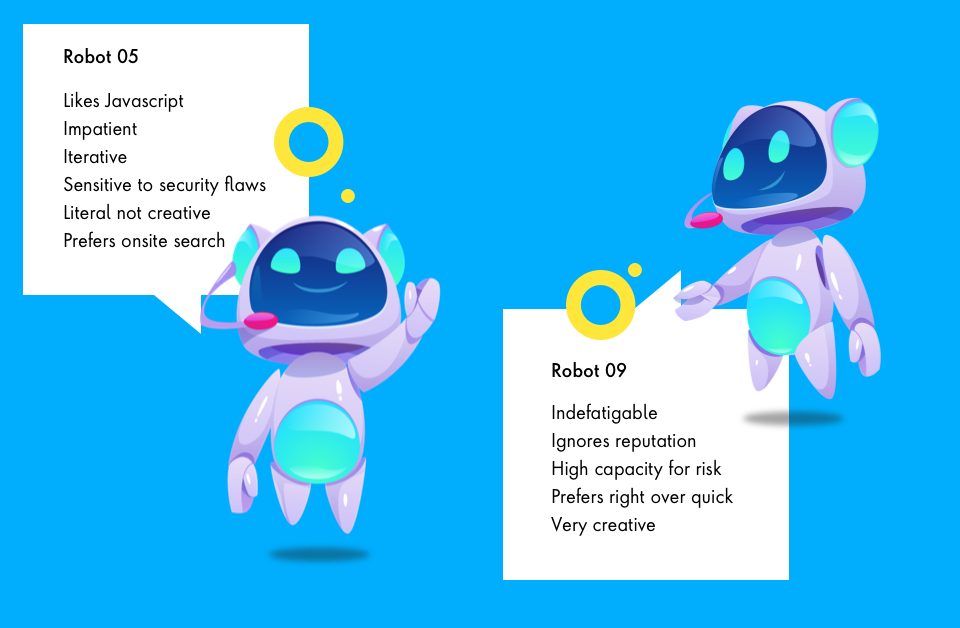
Get started:
Conversational commerce will require CPG brands to invest in machine experience (MX), the next era of user experience that seeks to understand how machines interact with experiences, products and content, optimizing them for the AI algorithms that consumers will use to shop.
Brands should look at their content readability and how that fits into the algorithm that popular LLMs are using. In the future, brands may even optimize content for AI personas, rather than consumers or retailers.
Communication measurement:
Using conversational AI to analyze retailer data and consumer sentiment across brands and channels
The next opportunity for CPG brands is using conversational AI to leverage insights from retailer data that companies already have, where manual analysis is too time intensive. While many CPG companies are collecting retailer data, much of the data goes underused unless part of a specific use case or project.
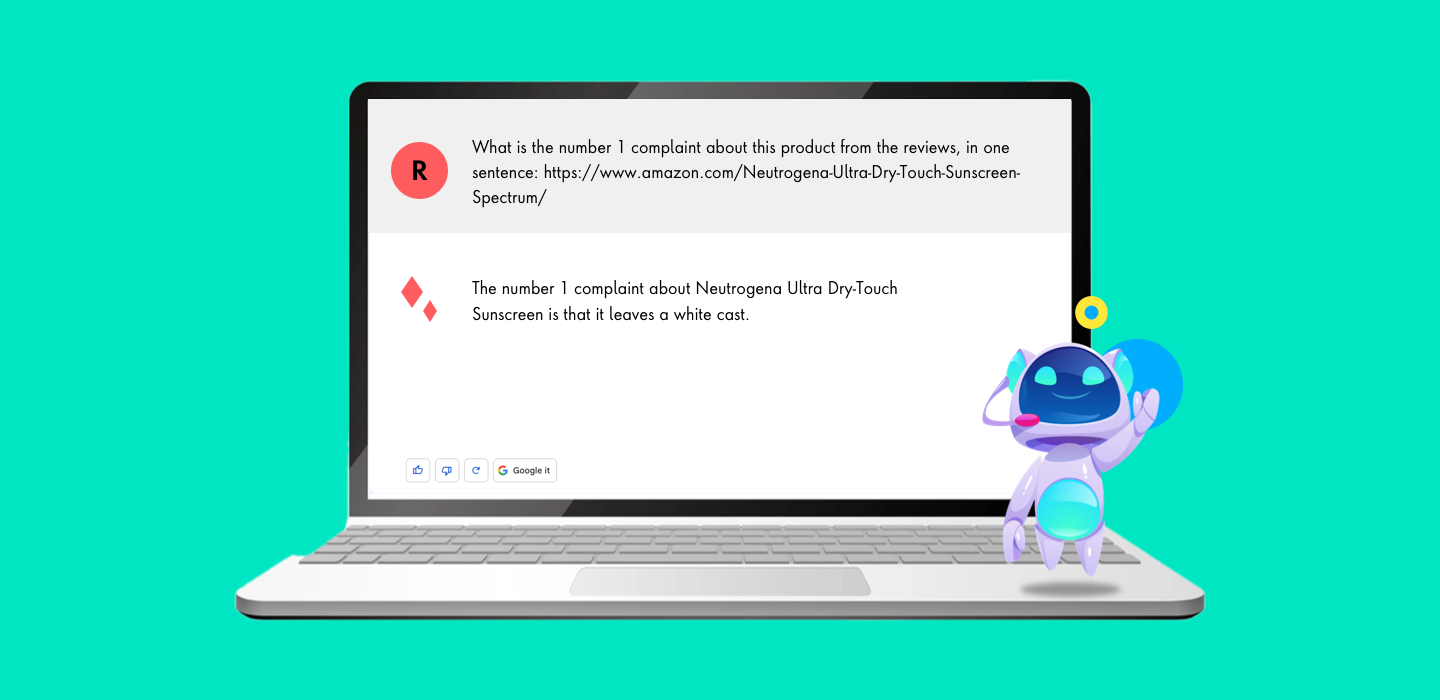
Pre-trained large language models can quickly generate insights from large unstructured data sets, allowing leaders to use LLMs to ask more open-ended questions and make broad discoveries. For example, a company could integrate unstructured text data from multiple brands, regions, retailers and channels into a pre-trained LLM to summarize purchase trends.
“AI can be the tool to bring organizations together for a sharper view of their business,” says Papasakelariou. “We are seeing companies like Pepsi and Unilever standing up specific data analytics practices that help scale insights across previously siloed business areas.”
Get started:
Integrating AI tools for retailer data analysis requires an agile organizational model, as well as centralized retailer data. Brands should begin by creating cross-functional data strategies for an underlying foundation that promotes responsible use of data and quality control.
Brands can also use pre-trained models to perform real-time sentiment analysis of new advertisements and other marketing content to quickly determine specific creative adjustments.
AI for product development:
Training a large language model for CPG product design and marketing
Brands can prompt AI models during product development, conversing with tools about development requirements and limitations, generating unique ideas much more efficiently.
For example, a beverage company may be developing a new soda flavor. Using conversational AI, manufacturers could prompt the algorithm to generate hundreds of different recipe variations, optimizing for costs, sustainability or time. The conversational ability and instantaneous responses would reduce operations costs, waste and errors.
How can CPG brands use AI for supply chain innovation?
In addition, the beverage company could also use conversational AI to co-create marketing messaging for the new flavor. Rather than manually generating slight differences in marketing copy based on demographic, region or language, a conversational AI could quickly be prompted to generate 100 advertisement variations and accompanying UTMs.
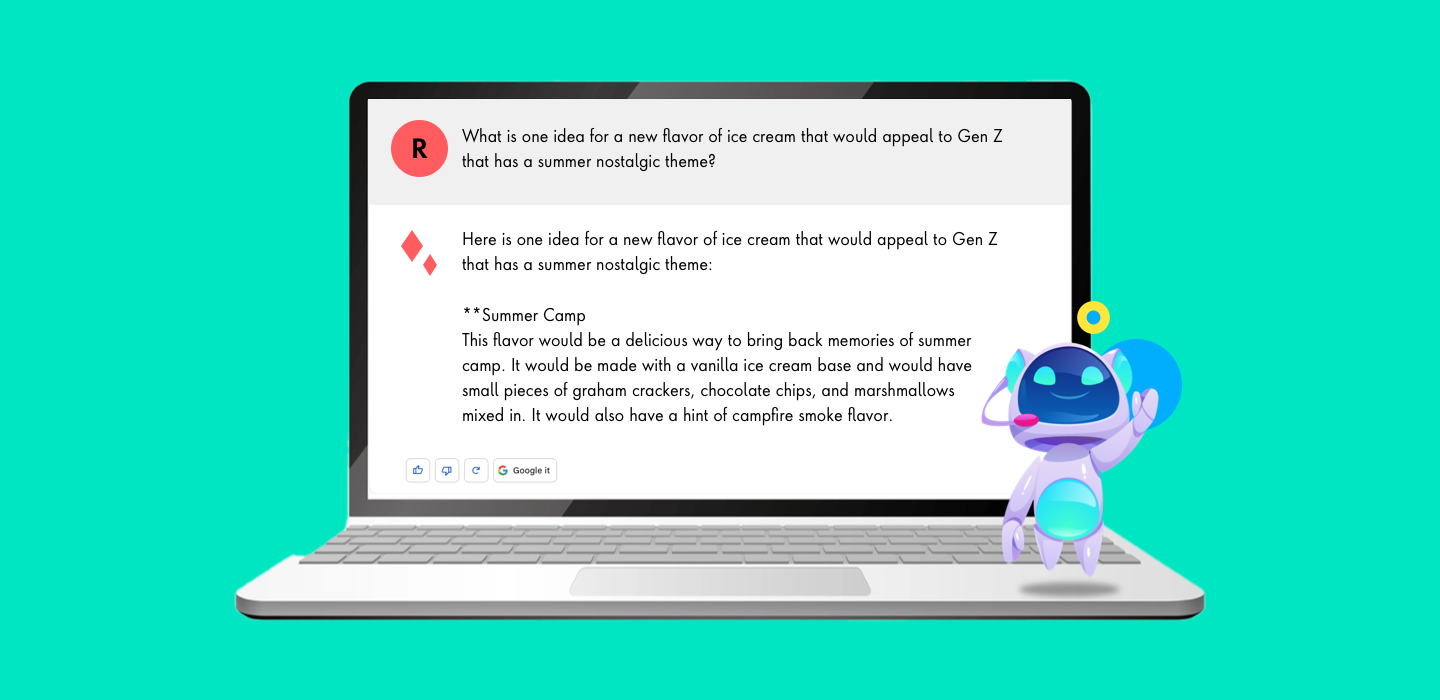
How will conversational AI affect the future of the CPG industry?
Overall, digital business transformation has been a challenge for many brands due to their matrixed organizations. Experimenting with conversational AI, and machine learning in general, requires a modern technological architecture and a change management strategy for employees. CPG firms that are digital-first can quickly adapt to a new future, powered by conversational AI.
“E-commerce was a slow burn, it got bigger and bigger every year,” says James. “AI chatbots are on a rapid adoption curve that may slow down, but it’s not stopping. CPG firms just need to figure out what they are practically able to chew off and tackle.”
CPG AI Solutions
Publicis Sapient can set up AI incubators in partnership with clients, powered by our unique SPEED formula and AI center of excellence. This approach combines strategic growth and business value, modern digital product thinking, next-generation customer experience, engineering, data and AI, all while leveraging our premier partnerships with Microsoft, Google and OpenAI.
Start a Conversation







